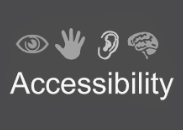Touchscreen devices have become a part of our day to day lives. From personal smartphones to point-of-sales machines, or interactive displays for the public, you can find touch screens almost everywhere. But there are different touchscreen technologies in those displays with projected capacitive touch sensors being the most prominent among them.
Projected capacitive (PCAP) is the most popular touch screen technology today and prevalent on smartphones and tablets. It is preferred over other touchscreens for features like great touch responsiveness, multiple-gesture support, picture clarity, flexibility and more.
Here are the major advantages of using Projected Capacitive Touch Screens.
Accuracy & Stability:
Projected capacitive touch screens offer a high level of accuracy and have a rapid response time. It is, therefore, considered reliable to use in interactive touch devices. PCAP touch sensors include a glass substrate with Indium Tin Oxide (ITO) conductive coating that does not change over time. Therefore, the ITO stays firm in its position, and its electrical properties also remain unchanged. As a result, the accuracy and stability of the sensor does not change with time.
Multiple Input Support:
Capacitive touch technology works on the principle of change in capacitance due to human touch. Upon a touch event, the radio field of the sensor gets disturbed or x&y channels get coupled together depending on the operating mode of the sensor, resulting in a touch response. This makes bare-finger touch more receptive to capacitive touch screens. But being an advanced version, projected capacitive touch screens allow input from light-gloved hands and capacitive stylus as well. This way, PCAP touch sensors offer seamless operations in medical, military and many other devices used in diverse settings.
Multi-Gesture Support:
Perhaps this is the main reason behind the popularity of PCAP touch technology. It supports advanced gesture recognition, such as swiping, rotating, zooming and pinching. As a result, PCAP touch screens offer an interactive and engaging experience to end users. In the mutual capacitance touch mode, PCAP sensors can handle up to 10 simultaneous touches which makes it possible for more than 1 person to interact with a large format touch screen at the same time.
Better Visuals:
Projected capacitive touch sensors provide a high level of contrast, optical clarity, and the finest visual experience. When compared to other touchscreen technologies, the light transmission feature is much better in PCAP touch screens, making them well adapted to high-light settings.
Damage Limitation:
The glass surface in projected capacitive touch screens offers resistance to scratches and abrasion. Projected capacitive touch screens have highly durable glass surfaces layered over the grid-patterned substrate. Hence, they cannot be damaged to the point where they will not function unless the substrate grid gets broken. As a result, they are considered extremely robust solutions for applications of heavy use or public areas.
Bottom Line:
When it comes to durability and greater touch precision, projected capacitive touch screens are always at the top of the list. The sensor allows touch operations even behind screen protectors, privacy screens, or vandal-proof glass.
A D Metro, through its innovative engineering, reinforces the capabilities of projected capacitive touch screens by providing a high-quality glass-on-glass sensor construction bundled with a discrete controller board.
A D Metro’s PCAP innovations include a patented group controller, where a common controller serves a range of screen sizes to simplify design and reduce inventory costs. The controller offers USB-HID compatibility with major operating systems, simplified product development and accelerated time to market.
Furthermore, to overcome the false touch issue caused by water on the screen surface A D Metro provides two signal processing techniques. With enough water on the surface, it can be sensed by the controller similar to a finger touch causing the sensor to activate without being touched or if you touch one spot, the water will couple that spot with another spot on the screen, causing erratic operation.
To minimize these issues, A D Metro provides a water rejection and wet tracking system with its PCAP touch screen. In the water rejection mode, the controller electronics can be programmed to reject inputs from the sensor until it finds something that appears similar to a normal touch. In the wet tracking system, the controller is programmed to recognize a certain thresholds of X and Y signals and rejects “leakage” due to water contamination and will ignore that amount of signal leakage.
Another innovation from A D Metro that greatly enhances PCAP is the ARGON controller. It is an intelligent PCAP controller that self-programs. It automatically senses and adapts to a wide range of off-the-shelf sensor sizes, formats and cover glasses. There’s no need for dedicated hardware drivers to make it compatible with an operating system. This controller comprises a built-in configuration utility, allowing adjustment of orientation, touch sensitivity and maximum concurrent touches. It requires no special software tool to setup operating parameters. All of this is done internally by the ARGON controller and is very easy to change any operation parameter of the controller by touch commands on the sensor itself when in setup mode.







